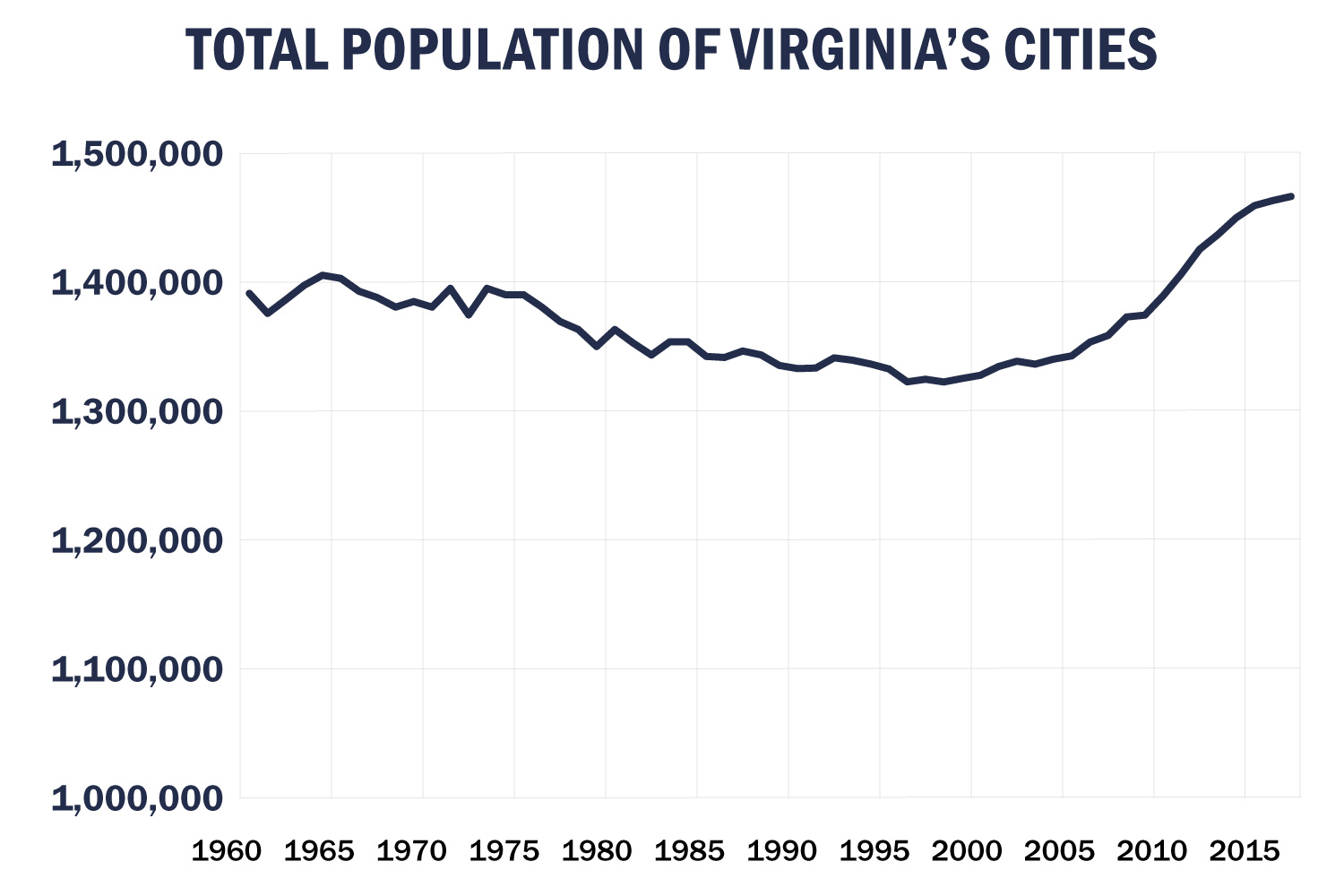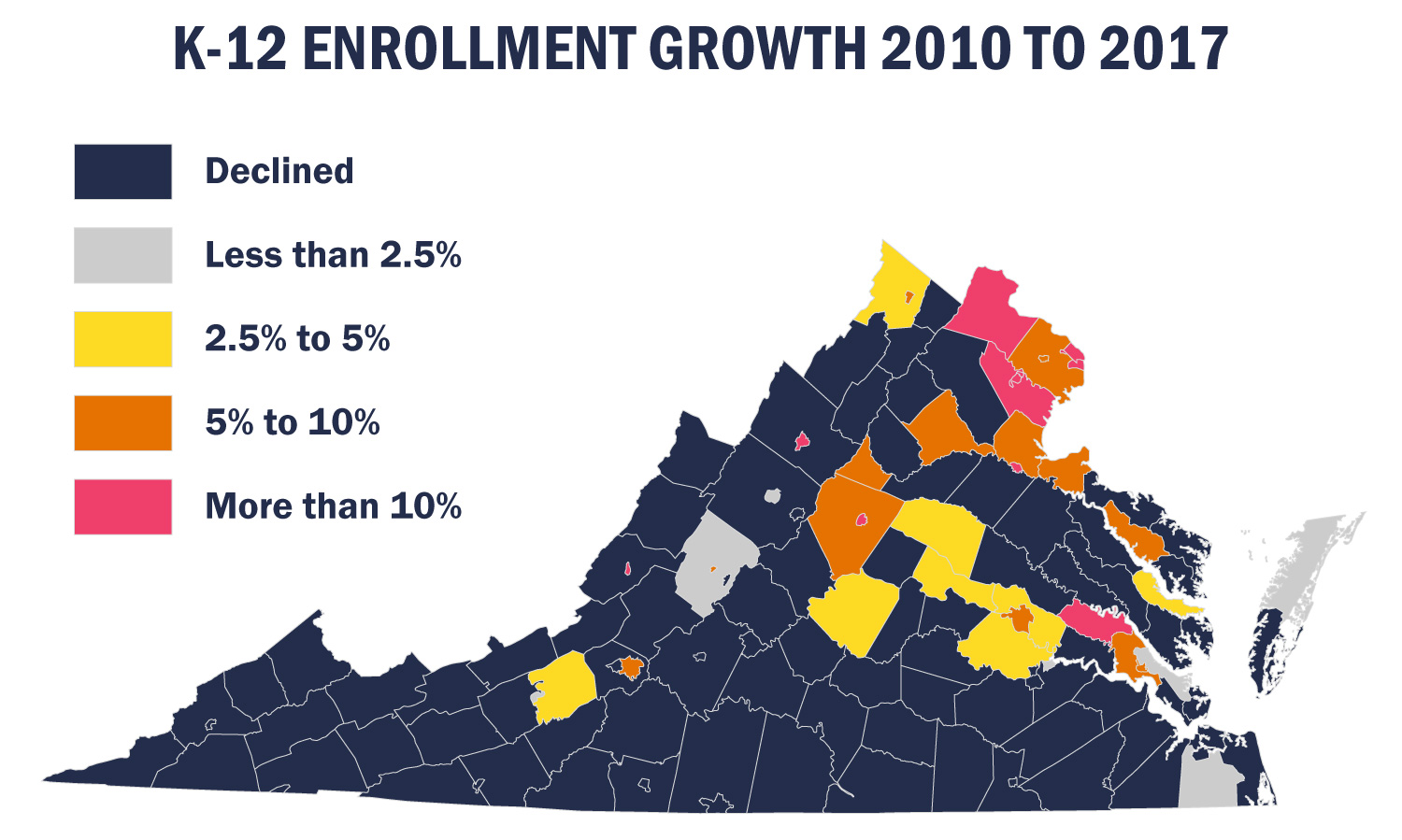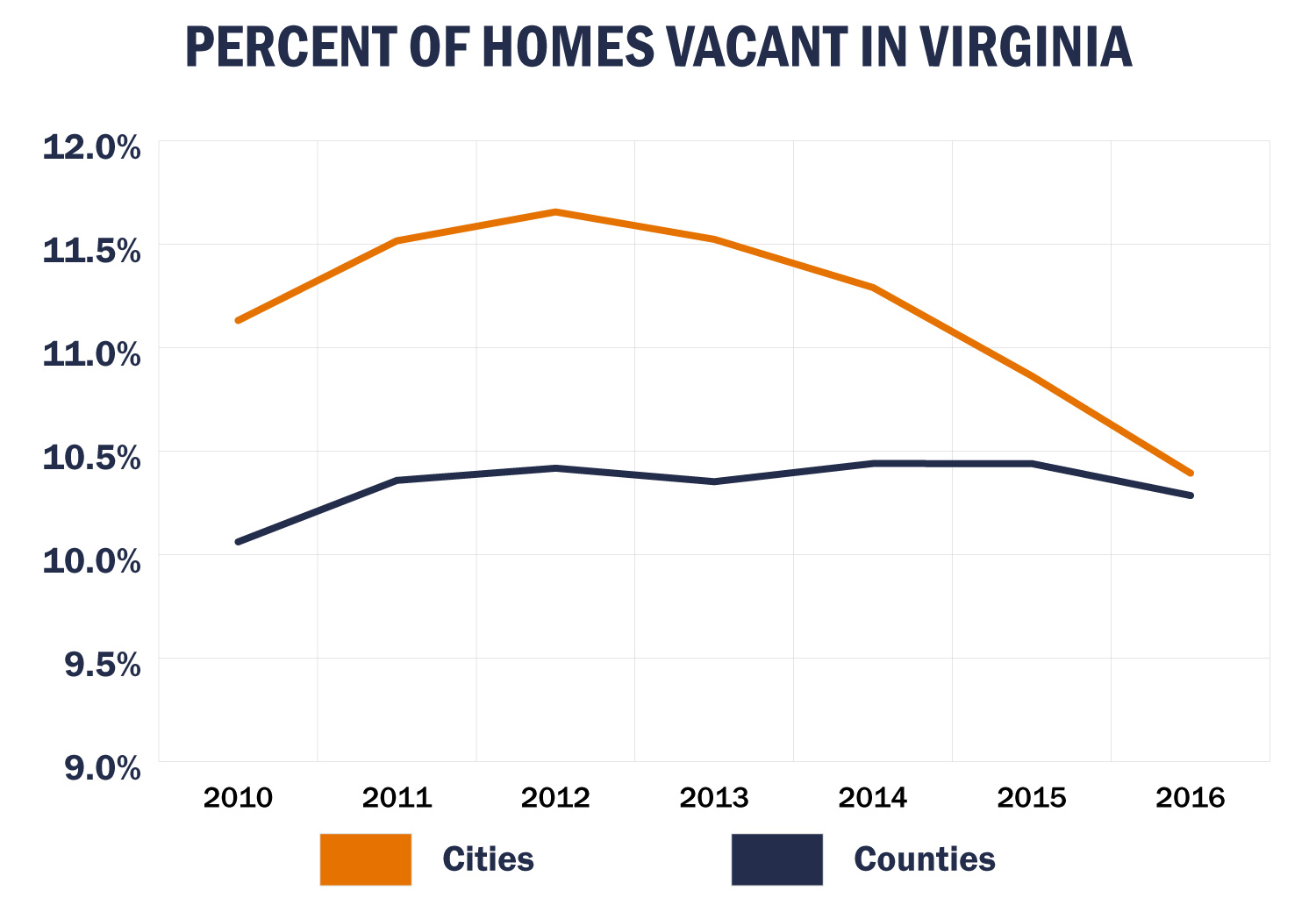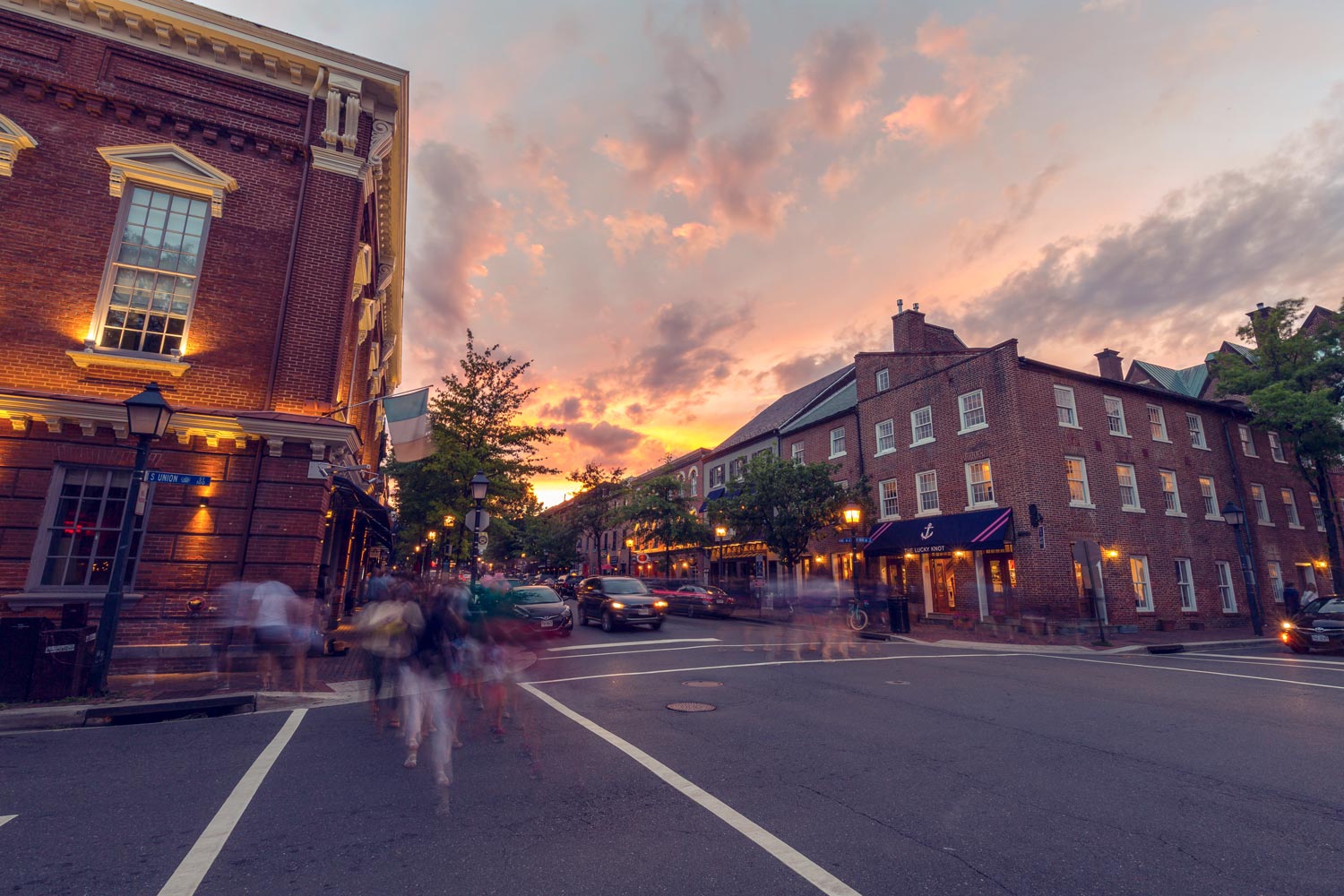Over the last decade, many of Virginia’s cities experienced a remarkable turnaround in fortune.
After decades of slow growth or decline, the populations of most of the commonwealth’s cities began increasing in the early 2000s. Following the 2007 recession, that growth accelerated further.
Hamilton Lombard, a demographer with the University of Virginia’s Weldon Cooper Center for Public Service, which tracks Virginia population changes, recently looked at school enrollment data, population estimates, housing inventory and more to make sense of these shifts in where Virginians live and how it’s changing.
He found that though Virginia families moved into the commonwealth’s cities in force after the 2007 recession, bucking a decades-long trend, the economic recovery and a competitive housing market is starting to send more of them to the suburbs.
First, he looked at the growth in Virginia cities. Lombard put this data visualization together to show the city population change in recent years.

Consolidated city-counties are not included in the population total. (Source: Weldon Cooper Center population estimates and U.S. Census Bureau).
“The recession in the late 2000s led more people, particularly young families, to rent in Virginia’s cities, where it was cheaper,” said Lombard, who noted Virginia cities typically have a larger share of rental units than neighboring counties. “And they didn’t have to worry as much about high gas prices or having a large down payment to buy a house.”
The net effect of more families staying in cities was not only an increase in population, but also in public school enrollment. While large swaths of Virginia’s rural areas saw decreases in the number of children enrolled in public schools, most cities saw growth.

chart (Source: Virginia Department of Education.)
However, family migration out of many Virginia cities is now rising. Recent birth and school enrollment data have shown a noticeable increase in families moving out of many Virginia cities and into nearby counties, Lombard said.
The surging economy and competitive housing markets may be the cause, he said. Overall population growth continues in most Virginia cities, but great demand for limited housing stock result in some of city-dwelling families are leaving for the suburbs.
“I think many Virginia cities are reverting back to the slower population growth rates they experienced before the recession,” Lombard said.
Some of the drivers behind these changes in where Virginia residents live are harder to quantify. While there were a number of factors that caused the turnaround in Virginia cities’ population trends during the early 2000s, including zoning changes and more financing available for urban property development, Lombard believes there was also an incalculable cultural change across the U.S.
“During the 1990s and early 2000s, when cities were still losing population, the media began to show urban life in a more favorable light,” Lombard said. “The popular show ‘Friends,’ in particular, had a cast made up of young, attractive professionals who choose to live in the city when many people were still moving out of cities.”
Though population growth is now slowing in Virginia’s cities, Lombard said “most Virginia cities are in a stronger position than in the past.”
That, Lombard said, is evidenced by rising urban real estate prices and decreasing home vacancy rates, as seen in this graph.

Consolidated city-counties are not included in city vacancy rates. (Source: U.S. Census Bureau.)
“The stronger real estate markets seem to be causing more families to leave than move in,” Lombard said, “but overall, Virginia’s cities are still attracting people – and I think that ‘Friends’ culture of it being desirable hasn’t gone away at all.”
Read more on Stat Chat, a blog from the Weldon Cooper Center.
Media Contact
Article Information
September 25, 2018
/content/virginias-cities-boom-more-families-are-leaving-them

